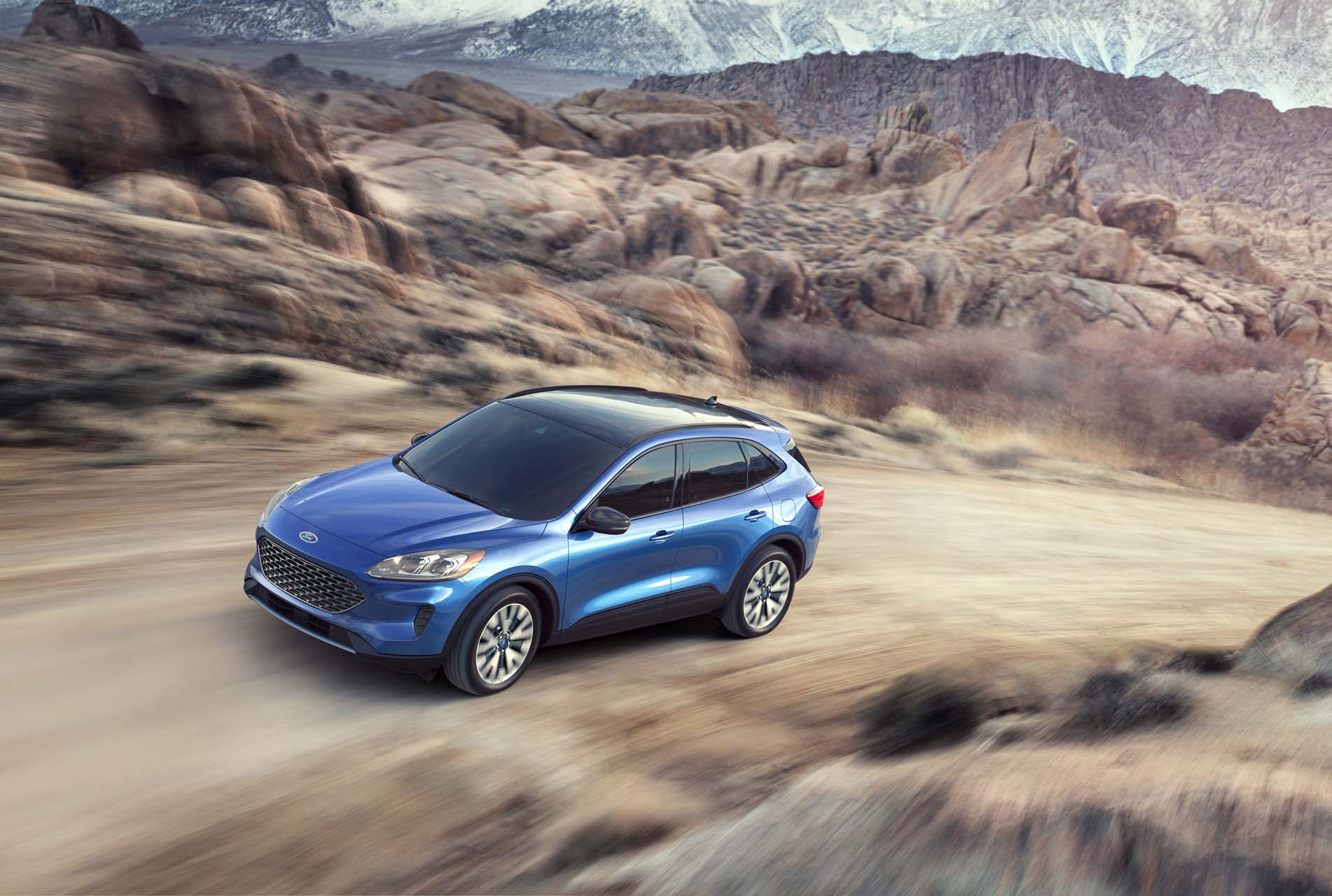
The redesigned 2020 Ford Escape crossover SUV will have nearly as many flavors as your local ice cream shop when it goes on sale later this year.
Beyond the S, SE, SE Sport, SEL, and Titanium trim levels, the 2020 Escape will offer six powertrains between its turbocharged and hybrid engines and its standard front- and optional all-wheel drive. Most Escapes go on sale this fall, although the optional plug-in hybrid is scheduled to arrive in the spring 2020.
On Escape S, SE, and SEL trim levels, Ford estimates that the standard 1.5-liter turbo-3 will produce 180 horsepower and 177 pound-feet of torque. The turbo-4 sends power to the front or all four wheels via an 8-speed automatic transmission. The base engine can run on just three cylinders in light-load situations to conserve fuel. Ford hasn't released fuel-economy estimates, however.
Review continues below
A version of the 8-speed automatic transmission is also hooked to a 2.0-liter turbo-4 rated at 250 hp and 275 lb-ft of torque that's optional on the Escape Titanium trim.
Notably, the turbo engines earn their horsepower and torque ratings while running on 91-octane premium unleaded fuel. They’ll make less power running on 87-octane regular unleaded fuel. The base turbo-4 is rated to tow up to 2,000 pounds, while the 2.0-liter turbo-4 is rated to lug up to 3,500 pounds.
Ford hasn't offered an Escape hybrid since 2012, but the new model shares little with its blocky predecessor.
The Escape SE Sport and Titanium come standard with a gasoline-electric hybrid powertrain that pairs a 2.5-liter inline-4 to an electric motor and a 1.1-kwh lithium-ion battery pack. A continuously variable automatic transmission (CVT) sends power to the front or all-wheel wheels and the setup is good for 198 hp combined. Ford said that the hybrid crossover SUV will be capable of hitting 85 mph on electric power alone.
Optional on all but the Escape S and SE Sport trims where it is not offered at all, the 209-hp plug-in hybrid powertrain with an upsized 14.4-kwh lithium-ion battery that can be charged in 3.5 hours on a Level 2 240-volt charging station for about 30 miles of electric-only range. The plug-in hybrid powertrain is only available with front-wheel drive.
Both hybrid versions can be run in full-electric mode given enough battery charge in reserve and an EV Charge mode tops off the battery during driving for electric-only use later in the plug-in Escape.
2020 Ford Escape styling, comfort, and features
No matter what's underhood, the new Escape has a clean, soft shape with gentle headlights and a low grille that gives it a carlike appearance that stands in contrast to the decidedly trucky Toyota RAV4. The new Escape’s front end channels the Tesla Model 3, albeit with a wide grille. Its roofline also echoes the Ford Edge, though the automaker says that front- and rear-seat head room is up compared to the new model.
Overall, the 2020 Escape stretches 180.5 inches from bumper to bumper, which puts it about two inches longer than the outgoing Escape. Turbocharged Escapes weigh between 3,300 and 3,700 pounds and the plug-in hybrid weighs as much as 3,900 pounds.
Inside, the Escape's look is less busy than before. SE and higher trim levels come with an 8.0-inch touchscreen for infotainment instead of the standard 4.0-inch radio display found in current models. A 12.3-inch digital instrument cluster is optional. The 8.0-inch touchscreen for infotainment comes with Apple CarPlay and Android Auto compatibility and can be paired to a B&O 10-speaker audio system.
Rear-seat riders have about two inches more leg room than before thanks to a standard bench that slides forward and backward. The Escape's cargo area can swallow up to 37.5 cubic feet of luggage with the rear seat forward, and about four cubes less with the bench all the way back. Escape hybrids lose about three cubic feet due to the location of their lithium-ion battery packs.
Maximum cargo space in the new Escape is 65.4 cubic feet for non-hybrids and 60.8 cubes for hybrids. That's about five cubes less than the Toyota RAV4 (including the RAV4 Hybrid) and around 10 fewer cubic feet than the Honda CR-V and Subaru Forester.
The Escape may not be as spacious as some competitors, but it's not lacking for active safety tech. All versions come with automatic emergency braking with pedestrian detection, automatic high-beam headlights, active lane control, blind-spot monitors, and cross-traffic alerts. Adaptive cruise control and automatic parking are optional.
Ford has not said how much the 2020 Escape will cost.
0 Kommentarer